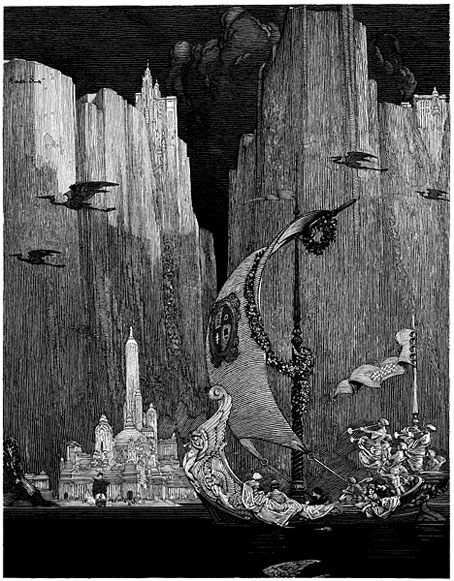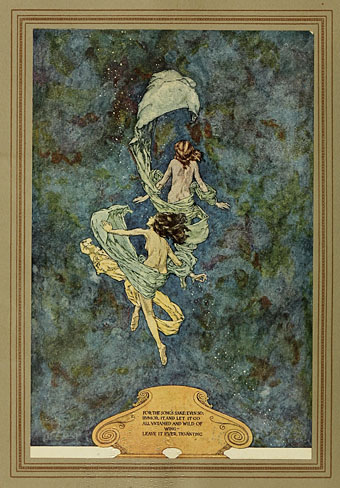
More of Franklin Booth’s invented architecture is on display in his 1913 edition of James Whitcomb Riley’s blank-verse drama, although not as much as the title might suggest. I wrote a little about this one shortly after I’d begun looking for illustrated books at the Internet Archive, and was dismayed at the time to find a copy with all the colour plates removed. One of the conveniences of the Internet Archive is that the books uploaded there are from many different libraries, so if one has been damaged (or poorly scanned) you may find a duplicate appearing from another source, as with this intact copy of Booth’s book. The plates this time are slightly marred by the “LC” insignia that the Library of Congress likes to punch through colour illustrations but since this was done to deter the kind of theft that spoiled the other copy it seems churlish to complain.

Booth proves himself in this volume to be the equal of any of the major book illustrators of the period (also more besotted with the Golden Section than most) yet this is one of his few illustrated editions. You can find a few more of these at the Internet Archive but most of them are lesser fare, the most substantial being A Hoosier Holiday (1916), a travelogue collaboration with Theodore Dreiser.
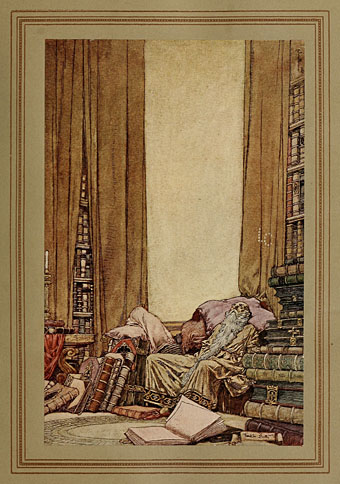
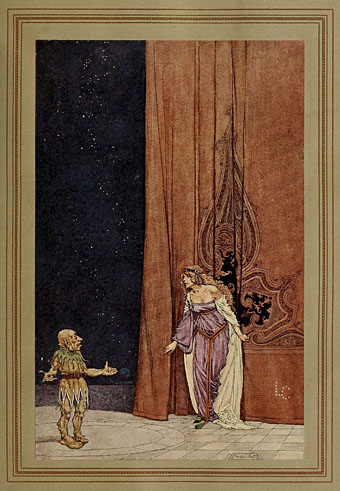
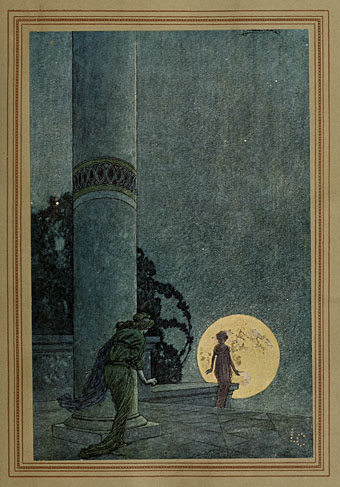
Continue reading “Franklin Booth’s Flying Islands of the Night”




